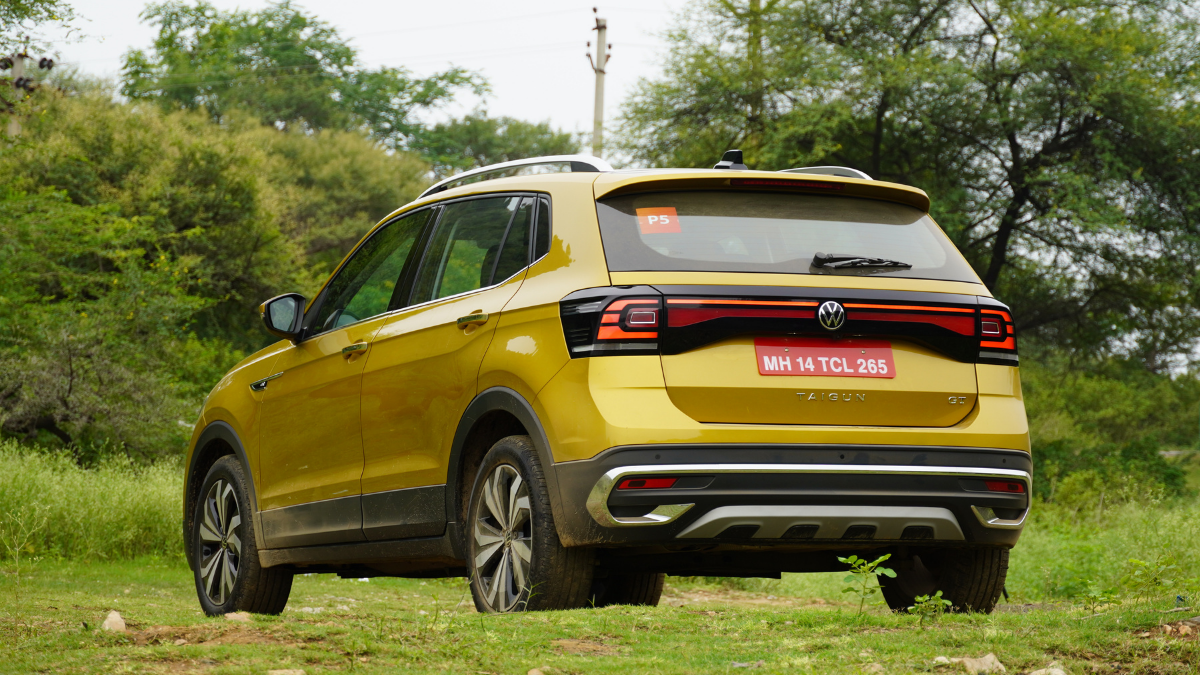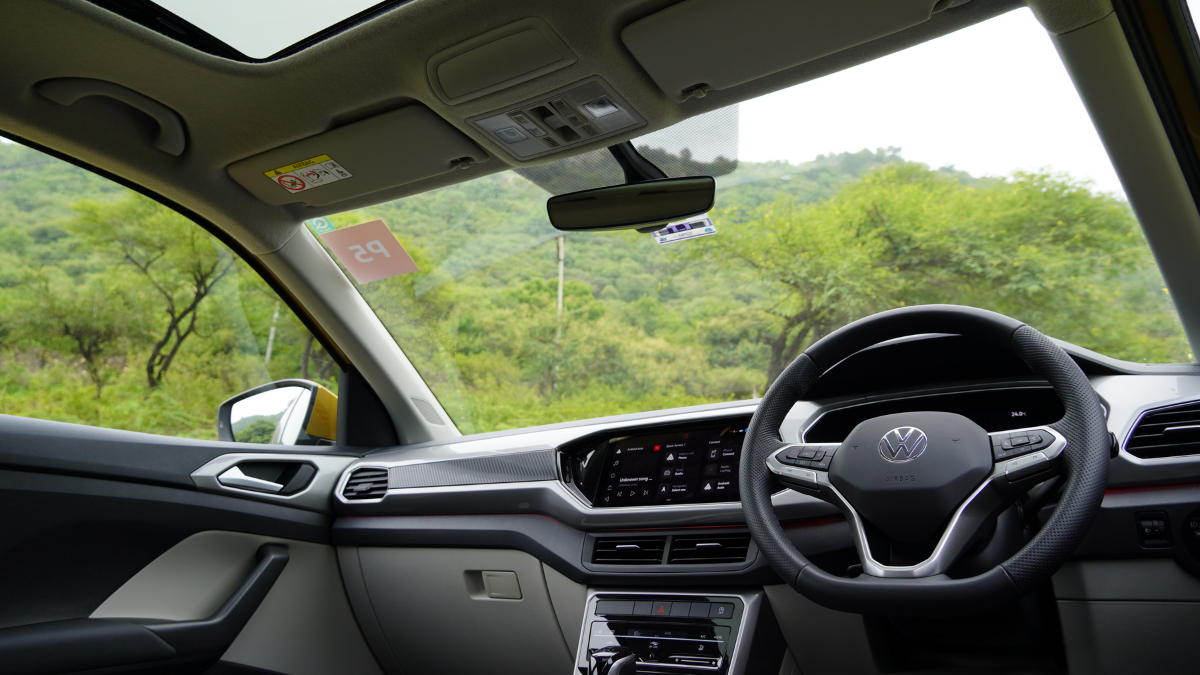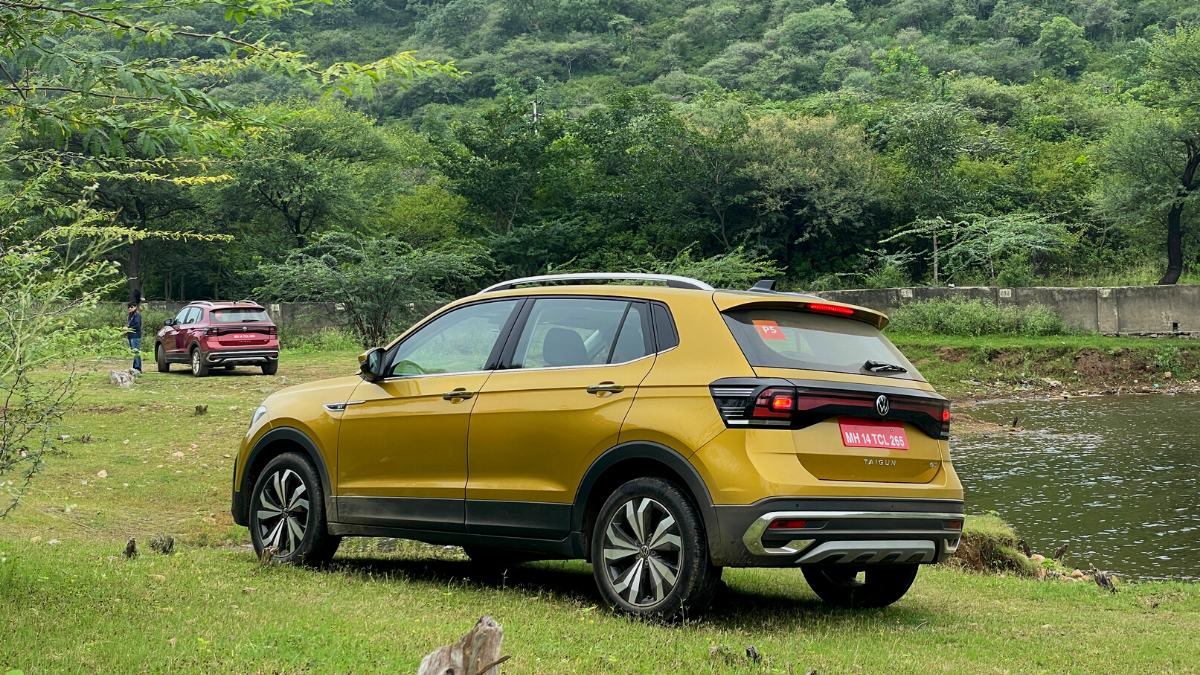Overview:
Only turbocharged engines on offer (1.5-litre and 1-litre), the intent is clear: Sporty yet economical drivetrains. Additionally, the company has gone ahead with 95% localisation of parts (Only 1.5TSI engine and DSG gearbox will be imported) to keep the prices competitive. The launch is around the festive season, tentatively mid-September and along with namesake Skoda Kushaq, VW Taigun will kick off Group’s ambitious India project 2.0.
Both these SUVs are key to the company’s growth in more ways than one. Will petrol engines be sufficient? How will the much-talked-about MQB AO IN platform perform on Indian roads? These and more questions need to be answered at the onset of Taigun.
Setting it up:
VW didn’t reveal the trim lines during the media drives. The drive choices were 1.5 TSI with DSG and manual transmission, and both of them wore GT badges on the grille. That said, the DSG is said to the top-of-the-line with all the bells and whistles.

The good things outside:
Taigun, as the company fittingly calls ‘engineered-in-India’, boasts of an ageless, classic design like the Tiguan and T-Roc. Consider the 1.5 TSI with DSG, a typical triple slat chrome grille sits on the upright chin and all-LED light set flanks it. This trim also gets sharp, dual-tone 17-inch alloy wheels and functional roof rail (50 kilos pay load).
The show-stopper is a connected light strip, joining the inside edges of the tail lights. Call them ‘infinity lights’ instead, and those will be standard across the trims. There is thick chrome at the bumpers and surprisingly they don’t look overdone.
What doesn’t meet the eye?
Is it a Creta and Seltos competitor? Let’s face it. Look at the size. Just over 4.2 metres in length, the sharp VW design traits don’t do justice to compact size. Secondly, in an attempt to offer a segment-leading wheelbase, the side profile has gone for a toss. The overhangs are too short and from certain angles appear disproportionate as well. The wheelbase indirectly has wiped some space off the boot, which stands at 380 litres (Sonet and Venue have more!)

The good things inside:
Not all went wrong with the longer wheelbase (2,651 mm). The cabin space, for instance, is generous. Three grown-ups embark comfortable, and the bench seat feels better finished than that in Skoda Kushaq. Headroom, thigh support and seat incline are decent, unless you are above 6-foot high.
Hold the steering, tap the 10-inch screen, knock the top of the dash, or row the gear stick, it exudes quality. The front seats are accommodating and supportive, though I wished for electric adjustment for the driver at least. Unless you choose a red-coloured offering, the interior is finished in black and grey, which looks neat.
The 10-inch infotainment feels premium, the touch is slick and its gets a connectivity suite (with a handful of in-built apps). Features like wireless charging, fully-digital driver’s display, in-built air purifier, seat ventilation will be optional, depending on the trim and price. View from the driver’s seat is clear and wide, and thanks to sufficiently large glasses and a sun roof, there is enough light penetrating into the cabin.

The downside?
Do you fancy a panoramic sunroof or an electrically adjustable driver’s seat or side curtains and neck pillows for rear seats? Well, if Creta has those, Taigun will pamper with the telescopic steering column and rain-sensing wipers.
Drive experience:
150 horsepowers at the disposals, the NH27 connecting Udaipur and Mount Abu was inviting some spirited driving. Without any surprises, the 1.5-litre TSI EVO turbo-petrol engine was equally ready to lap up open straights.
The fun bit is the fact that the turbo spool hits a high at as early as 1,300 rpm and stays all the way 3,500 rpm. The 4-cylinder engine is refined and smooth, and linearly sends out power to the front wheels. Also, thanks to well spread out torque, low-speed movement is decent.
With this engine in particular, VW has introduced cylinder deactivation tech, which hibernates two out of the four cylinders when you coast on the highways at a constant speed. In simpler terms, the fuel efficiency is optimised.
Which transmission to pick?
The 7-speed DSG is sublime, quick and responsive, and unarguably will ask for the highest premium in Taigun’s portfolio. Floor the accelerator, the shifts are imperceptible yet brisk and without any tangible lag. In other words, it’s easier to live with the DSG, and in case of fast overtakes, use the paddle shifts and the transmission will not disappoint. For numbers, VW claims a 0-100 kmph in 9.1 seconds for this engine-gearbox duo.
There is an option of 6-speed manual as well. It tries to match up with the DSG, but comes second best. That said, the shifts are natural, gears are nicely slotted and the lever is ergonomically positioned for better maneuverability. The clutch, though light, has got a long travel, making it slightly taxing in bumper-to-bumper traffic.
Drive and ride:
The robust powertrain requires solidity from the chassis and the newly-inducted MQB AO IN platform will not disappoint in any manner. While the engine purrs like a VW, the drive resonates the feel.
The ride, majorly on the stiffer side, disposes of smaller bumps and speed breakers with a wink. Even on potholes and slushy roads, the ride is composed, the suspensions manage to tackle imperfections with great confidence.
Whether on the highways or combatting cracks on the road, you would love to hold the nicely-judge steering wheel. Adjust the steering column for reach and rake, and the direct feedback for the steering will plaster a smile on your face around the corners. That being said, I expected a marginal heavier steering wheel to channel all that excitement on the tarmac with sheer pleasure.
While Taigun’s drive sounds lyrical, the time you spend in the cabin may not, especially if you don’t have a partner to converse with. The NVH (noise, vibration and harshness) can get to you if observed minutely. Without being critical, it may well be the brand-new healthy rubbers shod on 17-inch wheels screeching in resistance on highways.
TOI Auto take:
It’s game on for VW Group. Taigun and Kushaq have arrived in style, taking the competition straight to the Koreans. Will VW’s SUVs be able to pin down Creta and Seltos in their own backyard? Looks difficult and fierce. But who knows? Aggressive branding, improved dealership network and strategic pricing of Taigun could well revive the good old days of Volkswagen in India.

